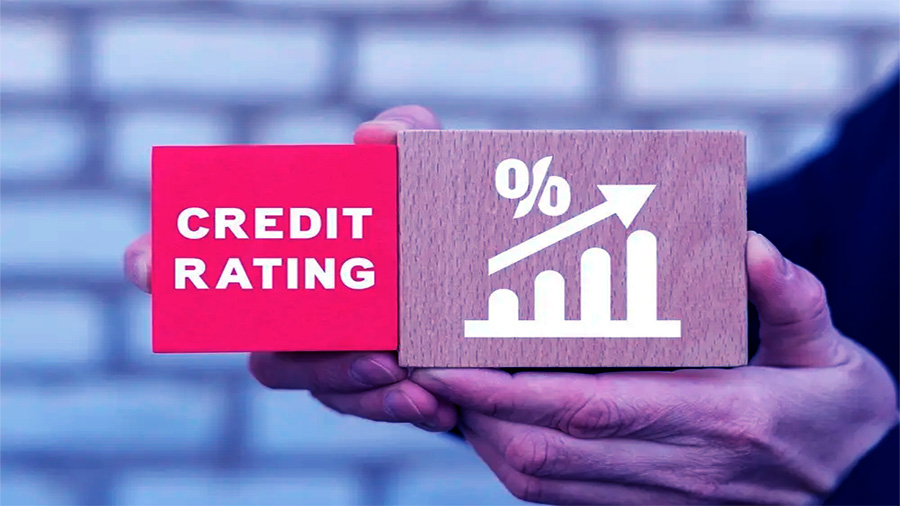Credit rating agencies (CRAs) play a pivotal role in the global financial system by assessing the creditworthiness of countries and companies. Their ratings directly impact sovereign debt costs, investor decisions, and overall economic stability. Major CRAs like Moody’s, Standard & Poor’s, and Fitch dominate the market, but emerging players are starting to challenge their influence. This article delves into how CRAs assess financial stability, their effect on sovereign debt ratings, and the criticisms they have faced during recent financial crises. By understanding these dynamics, you can better grasp the implications of credit ratings on financial markets and investment strategies.
What Impact Do Credit Rating Agencies Have On Sovereign Debt Ratings?
Credit rating agencies (CRAs) play a crucial role in determining sovereign debt ratings, directly impacting a country’s financial standing. When CRAs issue higher ratings, you see lower interest rates for a country’s borrowing, making it cheaper for them to obtain funds. On the flip side, lower ratings mean higher borrowing costs.
These ratings influence investor confidence. If you’re an investor, you likely rely on these ratings to gauge the risk of investing in a country’s bonds. A good rating attracts more investors, which enhances capital inflows for the country.
Sovereign debt ratings also affect economic stability. A downgrade can trigger financial instability and reduced investment, while an upgrade boosts economic growth and stability. These ratings can even shape policy decisions by pushing governments to implement economic reforms.
Major CRAs like Moody’s, Standard & Poor’s, and Fitch Ratings dominate the field. They assess factors such as political stability, economic conditions, debt levels, and a country’s debt-servicing ability. After the 2008 financial crisis, quick downgrades by these agencies were criticized for complicating recovery efforts.
Overall, CRAs significantly shape a country’s financial health and global economic standing through their sovereign debt ratings. Understanding these ratings helps you make more informed financial decisions.

How Do Investors Use Credit Ratings To Make Informed Decisions?
Investors use credit ratings to make informed decisions by evaluating the creditworthiness of issuers like companies or governments. These ratings, provided by agencies like Moody’s, S&P, and Fitch, are expressed in letter grades (e.g., AAA, BBB, D) and help you understand the associated risks and potential returns of an investment.
Credit ratings give you a clear understanding of an investment’s risk level. Higher ratings indicate lower risk and higher stability, while lower ratings suggest higher risk and potential instability. This allows you to choose investments that match your risk tolerance.
When you’re looking for safe investments, opting for higher-rated securities (AAA) can be a wise choice. Conversely, if you’re willing to take on more risk for higher returns, you might consider lower-rated bonds.
Using credit ratings, you can diversify your investment portfolio by including securities with varying ratings. This balances risk exposure and can enhance potential returns by not putting all your eggs in one basket. Higher-rated entities often secure lower interest rates, indicating financial stability, which might mean more favorable returns for you as they are less likely to default and more likely to provide consistent returns.
Credit ratings also influence market perception. Companies with high ratings tend to attract more investors, increasing market confidence in these securities. This can lead to greater demand and potentially better performance for your investments.
As a final point – remember that credit ratings help you assess risks, select appropriate investments, diversify your portfolio, and understand market perception, ultimately aiding you in making informed investment decisions.
Are There Any Emerging Credit Rating Agencies Challenging The Dominance Of The Big Three?
Yes, emerging credit rating agencies are challenging the dominance of the Big Three (Moody’s, S&P, and Fitch). Key players include:
- Dagong Global Credit Rating (China): Partnered with Russian and U.S. entities to form the Universal Credit Rating Group, offering balanced industry insights.
- Kroll Bond Rating Agency (KBRA): Founded by Jules Kroll, focuses on complex securitized products, leveraging Kroll’s risk consultancy expertise.
- Scope Ratings (Germany): Positioned as a European alternative, aggressively growing and investing to disrupt the market.
These agencies aim to address biases and offer diverse perspectives in credit ratings.
To sum up, you can observe Dagong, KBRA, and Scope Ratings emerging as contenders against Moody’s, S&P, and Fitch, aiming to bring varied and balanced views to the credit rating industry.

How Do Credit Rating Agencies Assess The Financial Stability Of Companies?
Credit rating agencies assess the financial stability of companies by examining several key factors. They review financial statements like balance sheets, income statements, and cash flow statements to gauge financial health. They analyze liquidity and solvency ratios to evaluate your company’s ability to meet obligations.
You should also know that they scrutinize debt levels and payment history, focusing on how much debt you have and how reliably you repay it. By evaluating profitability and cash flow, they determine the sustainability of your operations. Agencies consider market and industry conditions to understand external risks and incorporate broader economic factors like interest rates and growth into their assessment.
It’s essential to recognize that management expertise plays a crucial role in the evaluation. Agencies like Standard & Poor’s (S&P), Moody’s, and Fitch Ratings use unique methodologies but adhere to similar criteria for comprehensive creditworthiness evaluation.
To wrap things up, credit rating agencies deeply analyze your financial health, from statements and ratios to debt and market conditions, ensuring a thorough assessment of your company’s financial stability.
What Criticisms Have Credit Rating Agencies Faced In Recent Financial Crises?
Credit rating agencies like Moody’s, Standard & Poor’s, and Fitch have faced significant criticism during recent financial crises. Here’s why you might find a lot of skepticism around them:
- Failure to Recognize Risks: These agencies failed to recognize or warn about the risks associated with complex financial instruments, such as mortgage-backed securities, before the 2008 financial crisis. You could have seen massive financial losses and the collapse of major institutions due to this oversight.
- Inflated Ratings: Agencies inflated ratings for risky securities. During the 2008 crisis, they labeled these risky securities as “safe,” only to downgrade them to “junk” status later, causing market turmoil. The slow response in downgrading ratings during crises, evident during the European debt crisis, adds to their track record of being reactive rather than proactive.
- Conflict of Interest: Since issuers pay for their ratings, you can see how this might lead to agencies giving favorable ratings to maintain business relationships.
- Opaque Methodologies: The opaque methodology makes it hard for you to trust their ratings fully, as their methods are often inconsistent and not transparent.
- Market Influence: In Europe, downgrades of countries like Greece and Portugal during financial turmoil only added to the instability, prompting calls for a publicly funded European rating agency.
In the end, credit rating agencies have made some improvements since the 2008 crisis, but you’ll find that criticisms about their business practices and conflicts of interest still linger.



